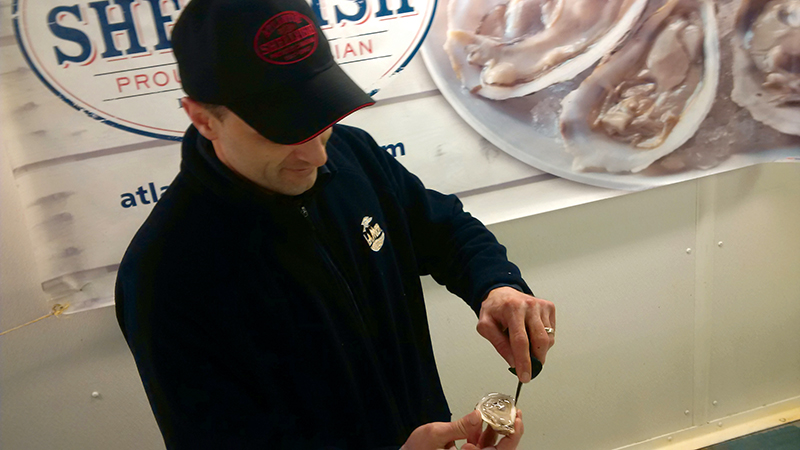Island shellfish has a global reputation for quality of product and great suppliers
It goes without saying that oysters, alongside Anne of Green Gables, potatoes, and Stompin’ Tom Connors, are Prince Edward Island’s most recognizable exports, to the point that some Islanders may roll their eyes, determined not to be reduced to a set of rustic clichés.
But we sometimes need reminding there are good reasons for the success of Island oysters in many of the choicest markets and fish shops in the world. Pride of place is offered to PEI on the menus of restaurants such as the Oyster Bar in Manhattan’s Grand Central Terminal.
At La Mer, one of Montreal’s busiest seafood retailers, director of operations, François-Xavier Dehédin, is direct when asked what criteria he uses when sourcing seafood and why PEI oysters hold a special place.
“Here, we’re looking for fresh products,” he says, “We’re just looking for the best and the freshest, and we’re looking to buy anything fresh and Canadian. And if it can be sustainable, like oysters, it’s wonderful.”
Asked which products from Prince Edward Island he stocks, Dehédin replies, “Mussels and oysters are the biggest inventory here. I’m always advertising for the Island.”
A quick scan around the shelves at La Mer also reveals Island clams and scallops, with Dehédin mentioning that the shop also frequently stocks PEI swordfish, monkfish and skate.
But as important as the quality of product is to him, his relationships with suppliers are probably more so.
“The first thing we do when we look for products and suppliers, we’re looking at the quality of the products and the guys behind that. We talk about things like price after.”
He then rattles off a list of Island suppliers he regularly deals with, including Leslie Hardy & Sons of East Bideford, the Raspberry Point Oyster Company of New London Bay, and Johnny Flynn of Colville Bay, before singling out Atlantic Shellfish of Morell, and Martin O’Brien of Cascumpec Bay Oyster Company.
“Those guys, Jacob from Atlantic Shellfish, are doing wonderful work,” he says. “It’s a new generation of farmers and fishermen.”
Dehédin marvels at a recent video posted to Atlantic Shellfish’s Instagram showing Jacob Dockendorff using a six-foot chainsaw to cut through the ice so a diver can go down and check on the oysters below.
He makes it clear that he regards his own role as a kind of industry publicist, narrating for his customers how products like oysters from the Gulf of St. Lawrence arrive on the market shelf.
“I’m the messenger,” says Dehédin. “They’re on their boat. They’re super busy. But I tell them every time I see them, ‘Guy, I’m talking to 1,500 people every week.’ So the more I know about them, the more I can explain when I sell their products, with a story related to that.”
On the subject of sustainability and crops to watch out for in the future, Dehédin says, “Here, we’re putting a lot on shellfish, and the next wave for La Mer is seaweed. Seaweed is a growing business, it’s the future, it’s sustainable, it’s good for the environment, and it’s good for your health.”
Knowing that the fussy eating habits of most Canadians might make seaweed a tough sell, Dehédin suggests that it might be preferable to recent futurist predictions that the next great source of protein is likely to be driven by either processed insect meal or lab-grown meat.
“I think here in Canada, before they start to eat insects, I’d like us to eat seaweed,” he says.
It’s not so far-fetched, seeing as seaweed is already central to the Japanese food culture, in keeping with their general reverence for seafood. Changing people’s habits, though, and convincing them to adopt new culinary tastes, may take some time. After all, sea treats we now consider delicacies, such as lobsters and oysters, haven’t always been held in the high esteem they are today.
- WHEN LOCAL IS BEST - June 2, 2020
- OUTDOOR COOKING RULES THE SUMMER MONTHS - July 1, 2018
- A Shucking Good Time - August 1, 2017
- Island Oyster Exports - April 1, 2017
- A Day On The Farm Gives Hope - January 1, 2017


